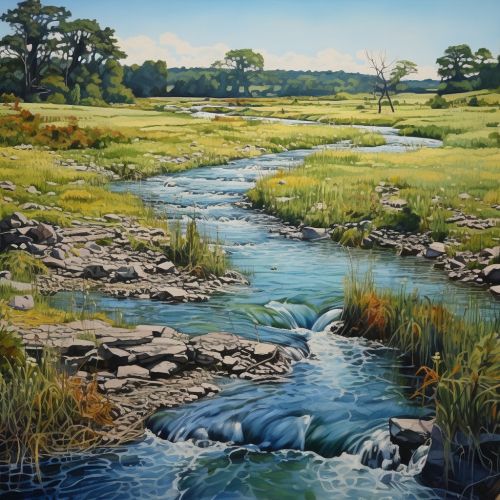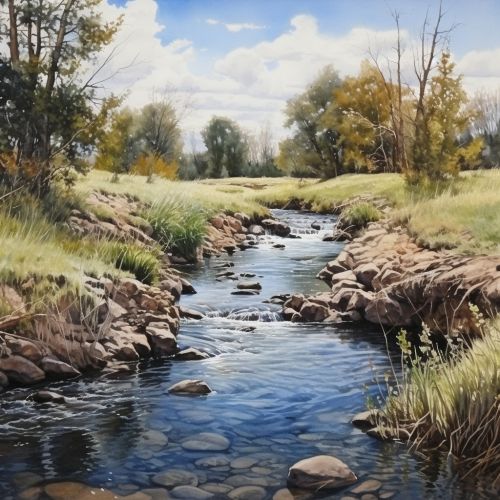Water cycle
Introduction
The water cycle, also known as the hydrologic cycle, is a continuous process by which water circulates between the Earth's oceans, atmosphere, and land, involving precipitation as rain and snow, drainage in streams and rivers, and return to the atmosphere through evaporation and transpiration. This cycle is a fundamental concept in hydrology, the scientific study of the movement, distribution, and management of water in the Earth's biosphere.
The Processes of the Water Cycle
Evaporation
Evaporation is the process by which water changes from a liquid to a gas or vapor. This is the primary pathway that water moves from the liquid state back into the water cycle as atmospheric water vapor. Studies have shown that the oceans, seas, lakes, and rivers provide nearly 90 percent of the moisture in the atmosphere via evaporation, with the remaining 10 percent being contributed by plant transpiration.
Transpiration
Transpiration is the process by which moisture is carried through plants from roots to small pores on the underside of leaves, where it changes to vapor and is released to the atmosphere. Transpiration is essentially evaporation of water from plant leaves. It is an important component in the water cycle as it is one of the major sources of water into the atmosphere.
Condensation
Condensation is the process by which water vapor in the air is changed into liquid water. Condensation is crucial to the water cycle because it is responsible for the formation of clouds. These clouds may produce precipitation, which is the primary route for water to return to the Earth's surface within the water cycle.
Precipitation
Precipitation is water released from clouds in the form of rain, freezing rain, sleet, snow, or hail. It is the primary connection in the water cycle that provides for the delivery of atmospheric water to the Earth. Most precipitation falls into the oceans or onto land, where, due to gravity, the precipitation flows over the ground as surface runoff.
Surface Runoff
Surface runoff is water, from rain, snowmelt, or other sources, that flows over the land surface, and is a major component of the water cycle. Runoff that occurs on the ground surface before reaching a channel is also called overland flow. A portion of runoff enters rivers in valleys in the landscape, with streamflow moving water towards the oceans.
Infiltration
Infiltration is the process by which water on the ground surface enters the soil. Infiltration rate in soil science is a measure of the rate at which soil is able to absorb rainfall or irrigation. It is measured in inches per hour or millimeters per hour.
Subsurface Flow
Subsurface flow, in hydrology, is the flow of water beneath the earth's surface. When rain or other forms of precipitation impact the earth's surface, a portion of it infiltrates into the subsurface layers. This water movement within the subsurface is the subsurface flow, which eventually leads to groundwater recharge.
Groundwater Flow
Groundwater flow is the part of the water cycle where water in the ground moves from areas of high elevation and pressure to areas of low elevation and pressure. This flow is governed by the principles of gravity and pressure and is often measured in inches per year.
The Importance of the Water Cycle
The water cycle is vital for life on Earth. Without the water cycle, the planet would not have the water necessary to support life. The water cycle distributes water across the planet, ensuring that all living organisms have access to the water they need to survive. It also helps to regulate the Earth's temperature and climate by distributing heat around the globe.
Human Impact on the Water Cycle
Human activities can have a significant impact on the water cycle. Deforestation, urban development, agriculture, and climate change can all affect the rate of processes in the water cycle. These changes can lead to a variety of problems, including water scarcity, flooding, and changes in climate patterns.
See Also












